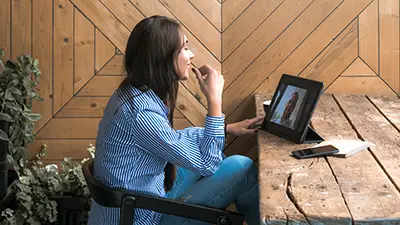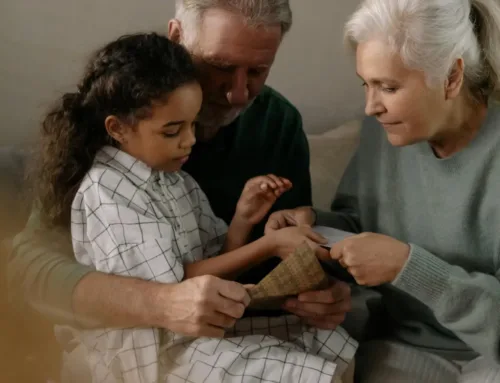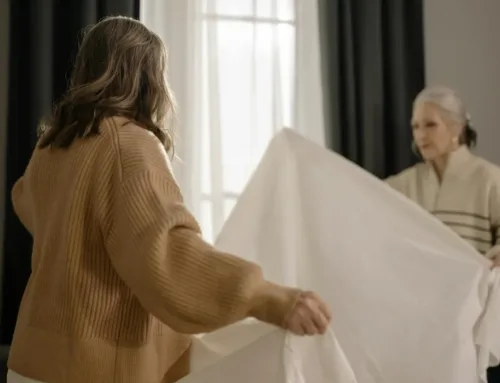Throughout your caregiving training, you have learned the importance of effectively communicating with the seniors that depend on you for care.

Now, you have the opportunity to expand your skill set by learning strategies for communication with family members who also serve as a source of support for seniors.
While there is still a place for handwritten messages on calendars and medication logs, you have the advantage of modern technology on your side to enhance communication. As you review your current care plans and strategies, keep these modern methods of communication in mind to upgrade the level of care that you provide for seniors and their families every day.
Understand the Benefits of Frequent Communication
The families of your clients often worry about their loved one when they are unable to check in on them regularly. As a caregiver, you serve as an essential point of contact that provides feedback regarding your clients’ overall wellbeing. Often, all it takes is a quick message to let your clients’ family members know that they are safe and happy.
Frequent communication also helps you to establish relationships with the family so that it is easier to address issues that arise with senior care. For example, it is easier to bring up a need for additional services when the family already trusts you as an in-home caregiver.
Set Up Regularly Scheduled Phone Calls

Phone calls help you to develop closer relationships with families by simply letting them hear the concern and compassion in your voice. While you may already be using this method as a part of your normal senior caregiver services, it may not be as effective as you like if the phone calls are sporadic.
Consider making routine calls on a weekly basis so that your clients’ families get regular updates about their wellbeing. You can even use your phone to set a reminder alarm so that you never forget to reach out to a family.
Send a Text Message
Sometimes, you just need to send a quick message. For instance, you may want to let a family know that you just arrived at the senior’s house and that they are doing fine during a wellbeing check. Alternatively, you may have a simple question that only the senior’s family can answer such as their preferred brand of food at the grocery store. For these types of situations, a text message is a perfect form of caregiver communication that allows you to send and receive information without taking too much time out of a busy day.

Keep in mind that text messages are also a wonderful way to send pictures back and forth among seniors and their families. Try sending a quick snapshot of the senior in your care enjoying their favorite hobby, or ask the family to send a picture of the grandkids when your client is having a rough day. It’s amazing the positive feelings that a simple text picture generates for everyone.
A text message also simplifies communication when you need to speak to more than one person in the family. Just set up a group text, and you can send the same message to everyone at the same time. This is also an excellent strategy to use if there are other caregivers involved along with several family members who all need to hear the same information or if you need a fast answer since more than likely one of the people will respond right away.
Request a Video Call
Video chats are one of the best ways that you can increase communication with families, and this strategy has multiple benefits that you can use to meet specific goals.

For example, you frequently notice changes in your clients’ health as an in-home care provider that must be brought to the family’s attention. With a video chat, your client’s families can quickly tell you things such as whether or not the senior has always had that tremor in their hands so that you know if a medical appointment needs to be arranged.
On a brighter note, video chats also allow you to add an extra element to senior care that improves emotional health. For instance, seeing their children or grandchildren on the screen brightens a senior’s day and helps them feel connected to their family. Whether you choose to use Skype, FaceTime or another video chat application, face-to-face conversations helps to eliminate feelings of isolation for seniors who live far from their family members.
Use Smartphone Apps
Your role as an in-home care provider may also include duties such as coordinating appointments or managing a senior’s medication or household needs.

In some cases, you may share these responsibilities with family members that need to be updated regarding your actions. Smartphone apps such as calendars and document sharing programs allow you to create a centralized location where everyone can input information.
When selecting a smartphone app, make sure that it is one that is compatible with each person’s phone that needs to be included. Then, make sure that everyone knows how to use it. Once you complete the initial set up, it’s surprisingly simple to see at a glance essential information such as when a senior last took their medication or has a doctor’s appointment. Since many of these apps also allow you to input notes, you have an instant way to connect with family members from any location.
Know When to Use Each Method
When you use several different communication methods as a senior caregiver, it is important to know when to use each one. For instance, phone calls are perfect for communicating with family for the first time since it allows everyone extra time to ask questions and clarify essential information. Alternatively, a text message may be more ideal for minor issues that arise when your clients’ families are likely busy with work or caring for their children.
Try These Tips to Maintain Strong Communication With Families
Even with the influence of modern technology, communicating with family members still requires you to utilize your interpersonal skills. Be sure to follow these tips to further increase the effectiveness of your new communication techniques.
- Always introduce yourself as an in-home caregiver during your first contact with a family member.
- Avoid communicating during inconvenient times such as late at night unless it is an emergency or fits a family’s schedule.
- Find out who the family prefers to be the main point of contact, and reach out to them first when it makes sense.
- Remember to respect the family’s preferences such as using their preferred method of communication whenever possible
- Plan what you want to say before a phone call, and write down important points to cover during your scheduled caregiver communication calls so that you don’t forget anything,
- Keep in mind that communication should always be positive, even when the topic is difficult for everyone to discuss.
- Feel free to share happy news such as a senior’s most recent accomplishment or an excellent health report to bolster good feelings among each member of the care team.
Conclusion
Communication is a primary component of making sure that seniors enjoy continuity in their care that promotes better overall wellbeing. Now that you have these strategies to add to your caregiver tool kit, you can look forward to forging relationships with your clients’ families that benefit everyone.



